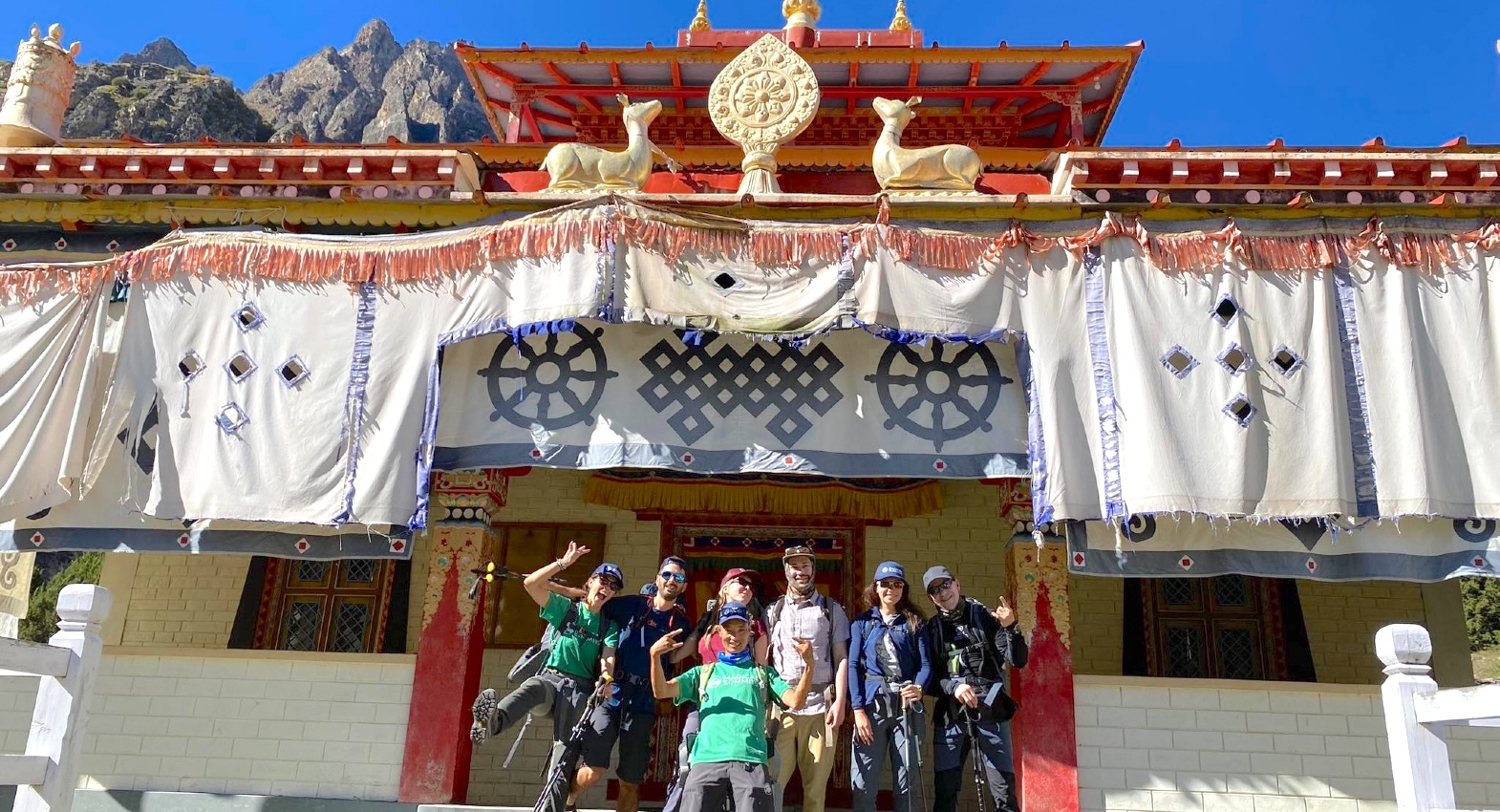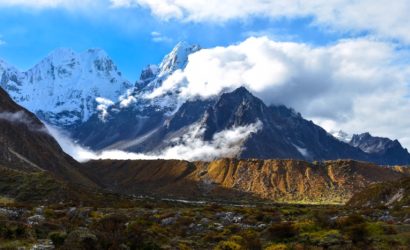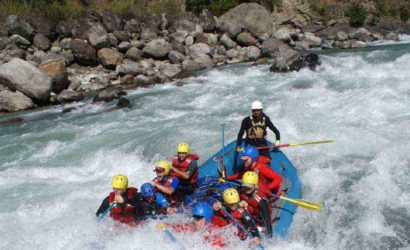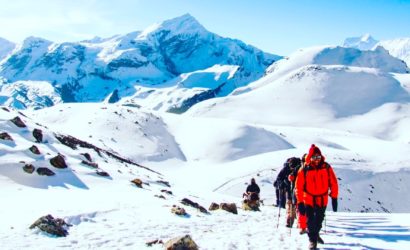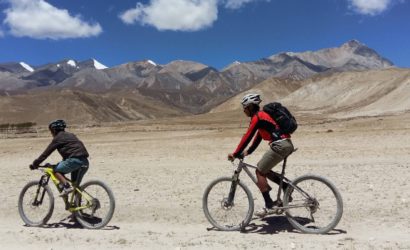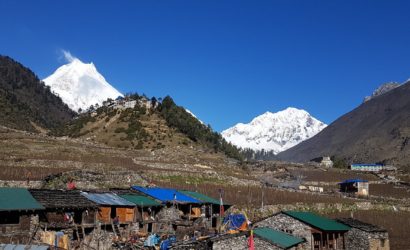Tamang Heritage Trail is a new experience for the trekkers exploring the beauty of mountains with the culture of local Tamang people. We trek through Tamang villages with their life and culture.
We will receive hearty welcome by the locals rich in their separate costumes, architecture of their mountain houses and antique monasteries. It offers you wilderness experience through beautiful landscapes of alpine terrain; flat meadows and rhododendron forests.
The population of this area are believed to be the off spring of Tibetans from Kerung who intermingled with Tamang of the Helambu area. Tamang communities are generally found on higher elevations with the peasants charming in variable farming and taking out of forest products.
They are mainly sheep and yak herders but grow some grains and vegetables. Their daily life activities comprise raising domestic animals, agriculture and trade with Kerung in Tibet. They also weave baskets and mats from bamboo.
During the trekking we enjoy the impressive views of Langtang Lirung Langtang Kerung, Chimse Danda ridge crossed by Ganjala Pass Dorje Lakpa Jugal Himal, Paldor peak, Ganesh Himal and Manaslu Himal.
Best Time For Tamang Heritage Trail Trek
When preparing for the Tamang Heritage Trail Trek, it’s crucial to consider the impact of seasons. The weather conditions, climate patterns, humidity, air, and wind precipitation can significantly influence your trekking experience. Therefore, it’s essential to communicate the time of year you plan to travel to ensure proper preparation and adjustment of your Tamang Heritage Trail Trek.
Autumn:
The Tamang Heritage Trail Trek in Nepal is best undertaken during the autumn season, spanning from September to November. This period boasts stable weather characterized by mild temperatures, clear blue skies, and dry conditions, providing optimal visibility for enjoying the scenic surroundings. Additionally, the low levels of rain and wind make trekking during this season more comfortable and manageable.
Autumn begins immediately after the monsoon season, resulting in dry landscapes and eliminating slippery terrains that can pose challenges during treks. This season showcases vibrant foliage and provides clear views of mountains, green forests, and villages, making it a popular time for trekking. However, due to these favorable conditions, the route to Tamang Heritage in the Langtang Region can be crowded.
Spring:
Spring season, spanning from March to May, offers optimal conditions for trekking the Tamang Heritage Trail. Similar to Autumn, this period ensures stable weather and clear visibility due to the prevalence of clear skies and minimal cloud cover. It is considered a prime time for trekking enthusiasts seeking an immersive experience along the Tamang Heritage Trail.
In spring, vibrant flowers blossom, and the lush forests regain their greenery, creating a stunning landscape in the region. Embark on an exhilarating trek during this season, combining the breathtaking scenery with the excitement of the journey for an unforgettable experience.
Trekking season peaks during this time, leading to crowded routes that may pose challenges for trekkers. The increased popularity of trekking during this season contributes to constant overcrowding on the trails.
What Is The Difficulty Level Of Tamang Heritage Trail Trek?
Tamang Heritage Trail Trek is not a short trek to be easy. It is a multi-day trekking trip which has an easy to moderate difficulty level. You will reach over 2239 meters above sea level, which might not be challenging. The trail comes with rugged terrains and landscapes but with proper preparations and planning, it is easier to complete. On average, Tamang Heritage Trail Trek comes with ‘moderate’ difficulty.
As the highest altitude you will reach is 2239 meters above at Briddhim, you might not require a crucial look out for altitude sickness and related illnesses such as HAPE (High Altitude Pulmonary Edema), and HACE (High Altitude Cerebral Edema).
Apart from that, the route to the Tamang Heritage is sloppy and slippery, so you must be conscious about your trek in such landscapes. Especially, if you are trekking in the off seasons like monsoon and winter, the hike might be challenging. The heavy rainfall during monsoon will make the trail wet and slippery while the low temperature during winter might be challenging.
What Permits Do I Need To Do This Trek?
To trek to the Tamang Heritage Trail, trekkers must obtain Langtang National Park Entry Permit. As the route to this trail borders Langtang National Park, you will need to acquire the mentioned permit.
You can get the permit either from Nepal Tourism Board in Kathmandu or from Dhunche Checkpost in Rasuwa. The average cost of Langtang National Park Entry Permit for international trekkers is NPR. 3000 per person. Similarly, trekkers from SAARC Nations and Nepal must pay NPR. 1000 and NPR. 100 per person to get this permit.
Tamang Heritage Trail – Alternatives
It is possible to combine the Tamang Heritage Trail with the Langtang Valley Trek and/or Gosainkund Trek. Continue on to Lama Hotel for the Langtang Valley Trek instead of going back from Briddim to Syabrubesi. This takes you to the valley entrance, then continue at the end of the valley to Kyanjin Gompa.
This trek has spectacular, broad views from a wide valley of the Langtang Himalayas. Return to Thulo Syabru by backtracking, then stop at Syabrubesi. This would add up to the walk for three or four days.
The Gosainkund Trek is another excellent (and more challenging) trek in this area, often combined with the Langtang Valley trek, and can be added for an extended adventure to the Tamang Heritage Trail. Because of Lake Gosainkund’s altitude (4,379 m/14,370 ft.), the ascent up to here should only be attempted on the Langtang return trip, not on the way, to help acclimatization. Gosainkunda trekking will add another three days on the trek.
Upon your arrival in the Kathmandu airport after completing your custom formalities Visa, etc. pick up your luggage and look for our airport representative from Himalaya Discovery, who will display your name on the board at the arrival gate.
You will be greeted by our representative and escort you to your respective hotel upon your arrival. Today is a free and rest day in Kathmandu, so you can explore the city and get familiar with your surroundings
Our Tamang Heritage Trail trek starts with a journey of around 6 – 7 hours drive to Syabrubesi. As we leave Kathmandu from Machhapokhari, Balaju, we will traverse terraced fields, villages, and dense forests, enjoying the scenery of snow capped mountains and ever-flowing rivers.
Dhunche is the district headquarters of Rasuwa which offers vibes of bustling town touched with the views of Langtang. If you have not obtained required permits for Tamang Heritage Trail trek, you can purchase them from Dhunche.
After around 15 minutes of driving, we will finally reach Syabrubesi. We will traverse several settlements including Bharkhu, Thulo Bharkhu and finally Syabrubesi, where we will stay at a guest house. The twisted and turned road to Syabrubesi will be one of the most thrilling moments of your trek. Overnight at lodge.
On the third day, we’ll start trekking after an early breakfast. Leaving Syabrubesi behind, we will start walking uphill through the remote trail. The steep trail will lead us to Ronga Bhanjyang in about three hours, passing viewpoints with stunning vistas of Ganesh Himal, the Gosaikunda range, and the Goljang valley.
After a one-hour descent to Goljung Valley, we’ll have lunch and a short break. The trek continues for a few more hours to reach Gatlang, a picturesque Tamang village, where you can explore Parbati Kund and an ancient monastery. Tonight, we will stay at a tea house enjoying traditional Nepali cuisine, Dal, Bhat, and Tarkari. Overnight at lodge.
Today, we will begin our trek enjoying the serene beauty of the Buddhist settlements. We will pass through numerous Chortens, mani walls, prayer flags, and dense forests during the first two and a half hours to reach Chilime. After crossing a suspension bridge, a one-and-a-half-hour climb through terrace fields leads to Gonggang Village, where lunch will be served.
Following lunch, a two-hour gently ascending path takes you to Tatopani, passing a hot spring where you can choose to indulge in a natural bath, believed by locals to alleviate various bodily pains and aches. Overnight at lodge.
On the fifth day of the Tamang Heritage Trail Trek, we will begin our walk early in the morning. We’ll go through forests and thick jungles, slowly climbing up with changing ground. In about two hours, we’ll get to Brimdang and in another two hours we’ll reach Nagthali Danda.
We can have breathtaking views of Langtang Lirung, Shishapangma, Ganesh Himal, Tibetan Himal, and other snow-capped peaks from here. From Nagthali, we will take a short hike towards Thuman as we descend through the rugged trail. Overnight at lodge.
Today, we will reach the destination called Briddim, located on the opposite side of the Bhote Koshi River. We will begin our trek after a warm breakfast following the flat landscape that leads us to Timure along the historic trade route to Tibet.
As we reach Timure, we will stop at a small tea house for lunch. After that, we will hike for another 3 hours to reach Rasuwagadhi, an ancient fort marking the Nepal-Tibet border. Following lunch, the trail ascends steeply to Briddim, a Tamang village with Tibetan influences. We will spend the night in a local home for an authentic and traditional experience. Overnight at lodge.
Today, we will go back to Syabrubesi using the same route as the Tamang Heritage Trail. First, we will start our trip to Thuman using the rough paths and seeing the sights of Langtang Lirung and Shishapangma.
Our next place to reach include Nagthali Danda, Gonggang Village and Goljung Valley before we get to Syabrubesi. Upon reaching Syabrubesi, overnight at lodge.
From Syabrubesi, we will retrace our journey towards Kathmandu on the eighth day of the Tamang Heritage Trail Trek. We will catch a local bus from the stop and then head towards Dhunche and then to our destination.
We will pass Rasuwa and Nuwakot district before we make it to Kathmandu. After arriving at the Capital City, we will rest at our respective hotels.
You can either stay back in Kathmandu today and enjoy a free day or leave for your respective countries.
It’s time to say goodbye to the Himalayas. Enjoy your final moments in Kathmandu by having breakfast in a café, taking a city stroll, and/or shopping for souvenirs.
A representative will meet you at your hotel and transfer you to the airport to catch your return flight home. It’s good to be at the airport at least two and half hours prior to departure.

